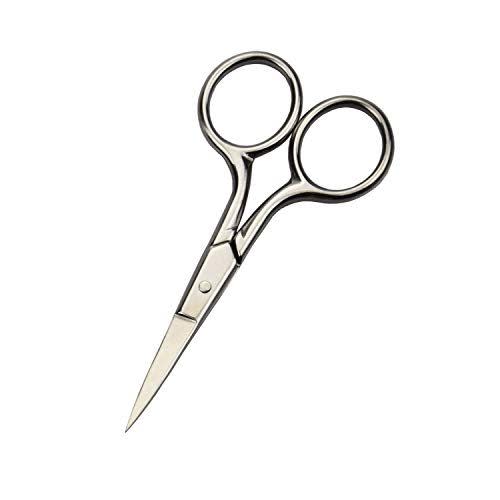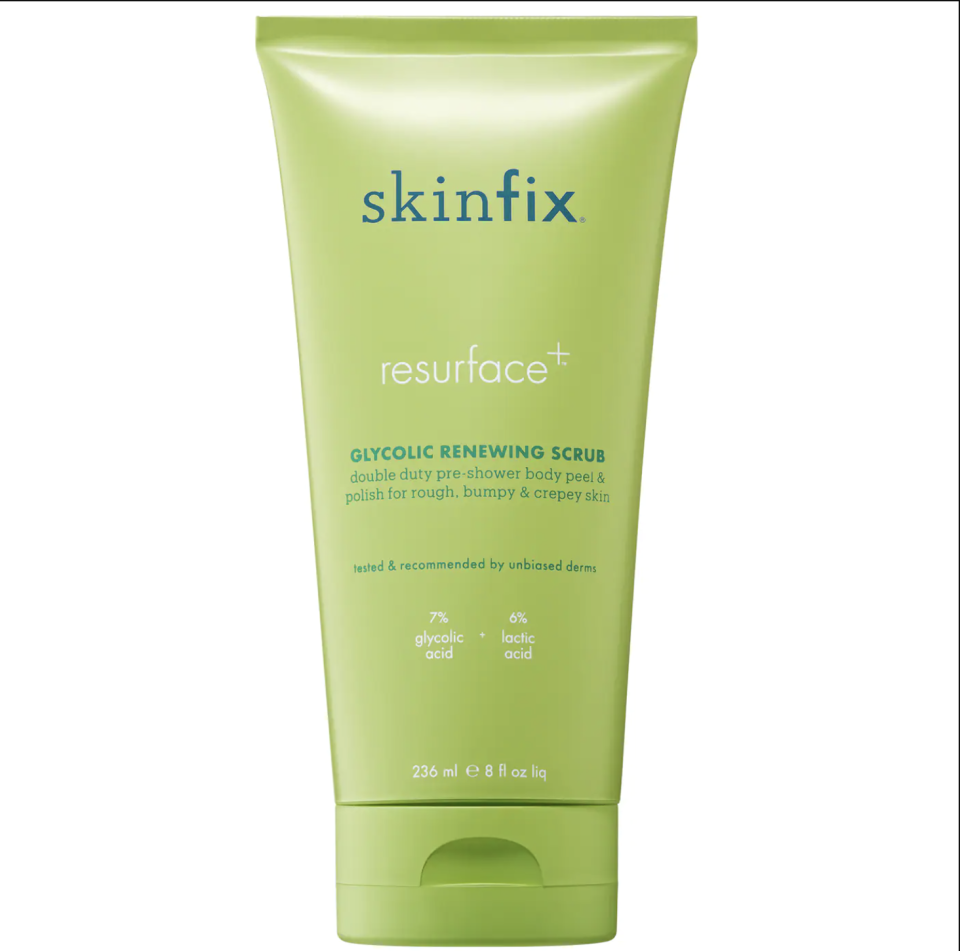Here’s Exactly How You Should Be Shaving Down There

"Hearst Magazines and Yahoo may earn commission or revenue on some items through these links."
If you decide to shave your pubic hair, you want to be prepared with the right tools and info to avoid getting any nicks, bumps, or razor burns. The process might seem pretty self-explanatory — how much different can it be from shaving your legs or armpits, right? Actually, the pubic area is pretty sensitive, and there are a few dos and don’ts on how to shave down there.
You might feel like you're seeing a million messages about pube grooming — friends who talk about being totally bare, waxing ads at every salon. If you’re wondering: Is this the norm? Should I shave it all off ASAP? The truth is, there’s no one right way to deal with pubic hair. Some like a bare bikini area, while others prefer leaving a little hair down there. Consider your pubic hair styling a very personal preference, Jennifer Ashton, MD, OB/GYN and author of The Body Scoop for Girls, says. Just like anything else you’d do to your bod — your haircut, nail art, makeup routine (or lack thereof) — go with what feels right for you.
But if you’re curious and wondering where to start — like, can you use the same razor that you shave your legs with? — read on for expert tips on how to shave your pubic hair.
Wait, is shaving better than waxing?
Waxing is a super common hair removal method — and TBH, requires less upkeep than shaving — but real talk: Ripping your hair out can be pretty painful. Plus, waxing your bikini area is often done at a salon, which can be a little inconvenient (depending on your schedule) and can become pretty costly.
On the other hand, shaving can feel like an easier and more familiar introduction to bikini-line grooming: You’ve probably been doing it to your legs, so you’ve got the basics down. Shaving can easily be done at home, and according to Dr. Rebecca Marcus, board-certified dermatologist and founder of Maei MD, “tends to pose a lower risk of ingrown hairs, or folliculitis, as compared to waxing.”
If you have sensitive skin, you might want to stick with shaving, “as wax tends to be more irritating in most cases,” Dr. Marcus says. But don’t forget to moisturize before and after, “to help create a barrier to minimize friction, [and] soften and smooth the skin,” Dr. Marisa Garshick, board-certified dermatologist, adds.
Shaving creams are relatively painless, but you have to read the package and the instructions very carefully because not all are made for the uber-sensitive skin around your vulva and bikini line. And even those that are safe for down there can still irritate — or burn — your skin if left on for too long. Just make sure to do your research.
So, how do you shave down there anyway?
It might sound complicated, but just follow the steps to shaving your pubic hair below and you’ll be smooth in no time.
1. Trim your pubic hair.
If this is your first time shaving your pubic hair (or it’s been a while since you groomed down there), it will be easier and much more comfortable to remove if the hair is a bit shorter. “Trimming the pubic hair before shaving can help to improve visualization and improve contact with the blade to ensure an effective shave,” Dr. Garshick explains. Just use a small pair of scissors or a hair trimmer and cut the hair so it’s about a quarter of an inch long.
But be extremely cautious with this step. “If you do trim pubic hair, make sure to do so in very good lighting,” Dr. Marcus advises. “And be super careful not to nick your skin with scissors!”

Professional Grooming Scissors for Personal Care
$5.99
amazon.com
2. Wash and cleanse your bikini area.
Hop in a warm shower and make sure the pubic hair is softened before you start shaving. “The water helps to soften the hairs and reduce the friction between the blade and the skin,” Dr. Garshick explains. She also recommends that you wash the bikini area with a gentle cleanser, like Dove or Cetaphil.
3. Exfoliate your skin.
This step is important. “Any time you shave or wax, that hair follicle on your skin is going to be opened up,” Dr. Ashton explains. “That makes it easy for bacteria to enter and cause an infection.” So, you want to make sure the area is clean before you get to work. An exfoliant will remove dead skin and help to prevent ingrown hairs. Remember, these products are not for inside your vagina, but simply the outer area.

Resurface+ Glycolic and Lactic Acid Renewing Body Scrub
$32.00
sephora.com
4. Grab some shaving cream.
Once again, make sure you’re choosing a simple shaving cream for sensitive skin. Then dab it all over your pubic area. “It is good practice to apply a shaving gel or cream to the skin before shaving to minimize friction and reduce the potential for irritation,” Dr. Garshick explains.
She and Dr. Marcus recommend Aveeno Positively Smooth Shave Gel and Vanicream Shave Cream. “Both are formulated to soothe and hydrate sensitive skin,” Dr. Marcus says. Another suitable option is eos Shea Butter Sensitive Skin Shave Cream, which is fragrance-free and formulated with coconut oil, shea oil, and shea butter for ultimate hydration.
5. Shave!
You’ve prepped and now it’s finally time to shave. Since pubic hair is thicker than the hair on your legs or under your armpits, it’s important to use a fresh, sharp razor. Then shave in the direction the hair is growing to avoid bumps and irritation. Using small strokes and holding your skin taut with the other hand will help protect against nicks and cuts. And of course, take it slow.
“You want to avoid putting too much pressure on the razor to minimize injury to the skin,” Dr. Garshick advises. To achieve a smooth shave, steer clear of dull razors and make sure to change the blade often. “If prone to razor burns, it is especially important to use a sharp razor that will get the job done in the fewest number of strokes possible,” Dr. Garshick adds. “It is also important to clean the blades frequently to help remove buildup.” Swapping out the blades every 5 to 10 shaves is best, she says.
6. Moisturize.
After you’re done shaving and you’ve rinsed away the excess shaving cream, moisturize your bikini line with a fragrance-free lotion. “Be sure products are non-comedogenic or oil-free to prevent clogged pores from developing if you are sensitive to bumps,” Dr. Garshick says. Also, “avoid any harsh active ingredients immediately after shaving, as it can burn or sting if there are any microscopic cuts [on] the skin,” she adds. Ingredients to steer clear of include exfoliating acids (save these for pre-shave prep) and retinoids.
Does pubic hair grow back faster, thicker, or darker?
Nope. “Shaving does not change the thickness of the hair,” Dr. Garshick explains. “After shaving, the ends of the hairs become blunted, which may cause the hair to seem coarse, but the actual thickness remains unchanged.”
What’s with all the little bumps?
So you shaved and now it seems your bikini line is breaking out on you. That’s likely razor burn, and it happens when bacteria gets inside and inflames those little hair follicles, leading to those prickly pink-and-white bumps you’re seeing.
“Not using enough lubrication when shaving can cause razor burn,” Dr. Marcus explains, which is why it’s so important to always use a shaving cream or gel when grooming down there. Many times this issue will resolve on its own within a few days, but in the meantime, you can soothe your skin by applying a gentle chemical exfoliant, like glycolic acid, before shaving.
What if there’s just one BIG bump? Most likely, it’s probably just an ingrown hair. You get them when dead skin cells clog up a hair follicle and force the hair that’s inside to grow sideways under the skin (rather than up and out). Resist the urge to dig or pick, and instead, treat it once a day with a mild toner.
“If you do get ingrown hairs, try exfoliating with an AHA and/or BHA,” Dr. Marcus shares. “In addition, use a lubricating agent and shave in the direction of hair growth to avoid irritation of the hair follicle, which can leave it prone to infection.”
If it doesn’t clear up, see your doctor. They might prescribe a topical antibiotic or steroid, “but you should discuss this with a specialist,” Dr. Garshick says.
Wait, why’s it so itchy down there now?
Having an itch down there is never fun. Most likely, that itching is caused by dry skin, new pubic hair, or inflammation from shaving. “Hair regrowth can cause itching,” Dr. Marcus explains. If you’re shaving with soap, try switching to shaving cream, since it’ll moisturize your skin a bit better. To prevent the tiny bumps and micro-nicks that irritate, it might be time to switch out your razor for a new one.
How can you avoid nicks and cuts when shaving?
Again, if it’s been a few weeks since you reached for a new razor, then now might be the time. “Avoid using a dull blade and be sure to apply a shaving cream or moisturizing lotion to minimize friction on the skin,” Dr. Garshick advises.
Also, Dr. Marcus emphasizes that you shave slowly and carefully. “If you do cut yourself, apply pressure for a few minutes until the bleeding stops,” she says. Healing ointments can help, Dr. Garshick adds, such as Vaseline Healing Jelly or Aquaphor.
Should you shave your pubic hair every day?
It might be tempting, but you definitely don’t want to shave down there every day — this could lead to increased irritation. “It’s best to give the skin some time to recover,” Dr. Garshick explains. “That said, there’s no specific rule on how often to shave as everyone’s hair growth can vary, though every few days is reasonable.”
You Might Also Like

